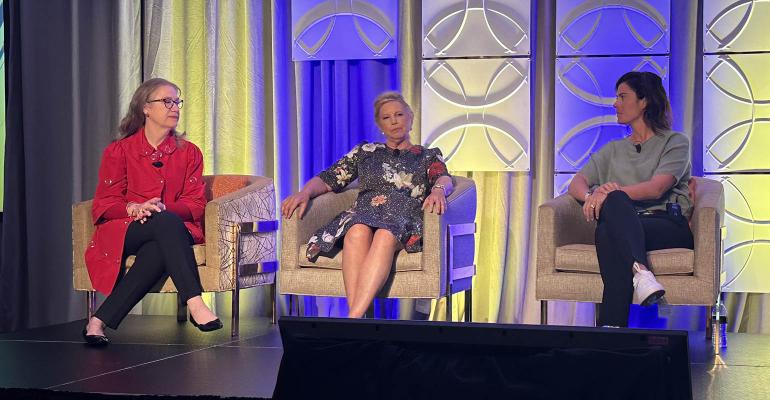Over the last 10-15 years, the registered investment advisor space has evolved significantly. Back then, many of these firms were operating as siloed, one-or-two person shops, without much infrastructure or complexity behind them. But the organizational design of RIA firms has changed significantly; several top RIAs in the industry opened up about their own structures, speaking at Informa Connect’s recent RIA Edge West event this week in Los Angeles.
Carol Benz, chief people officer at Cerity Partners, said one of the biggest changes she’s seen is a focus on separating the functions needed run the business from the functions associated with delivering services to clients and bringing in new clients.
“In the traditional model, the founders do it all, and they’re very comfortable doing it all,” Benz said. “As firms grow and they stand, those that are most successful really break out those functions around leading the firm and managing and growing the firm separate from the actual client-facing activities.”
Kelli Cruz, CEO and owner of Cruz Consulting Group, said she has seen an emergence of c-suite roles, or dedicated management roles. These are folks who are integral to the firm’s growth, but are not client-facing. Firms are getting more intentional about how they fill those roles, whether it’s promoting people within the organization or bringing someone in from outside. Some firms are even getting creative and filling those roles from outside the industry.
“Separate out client facing from what you need to do to run the firm on a day-to-day basis,” Cruz said. “That’s what we have to start, is to create that capacity so folks aren’t wearing multiple hats. Getting that role specialization is something that’s really, really important.”
Deborah Stavis, founder and CEO of Stavis Wealth Transfer Solutions, said when she first got into the industry, it was all about the rainmaker. Now, RIAs operate as teams,
“The silo mentality is dissipating, and I think that’s really important because it takes so many different cognitive skills to have an organization, especially if you’re delivering a full service experience for clients,” she said.
And if a firm is operating as a team, it needs to have team compensation and a career path.
“Building career paths was the single most important thing to allow people to embrace a team,” Stavis said.
Alison Burkett, senior partner and managing director, head of enterprise at Snowden Lane Partners, said one superstar is not going to be able to deliver all the things needed to the client.
“Building a team structure from a service standpoint, from a compensation standpoint and the ability to combine everything within your firm to deliver it to the end client—that team structure is really important,” she said. “We want to make sure we drive processes and procedures where it’s needed, so we can put that scale in play.”
But this is a people business, Burkett added, so there’s a right balance to strike between scale and delivering a high glove experience.
“We’re constantly within our firm looking at this dichotomy of driving scale, and how do we do that and where in our business should that be placed, versus how do we provide that white-glove service? Which inherently going to need and require incredible talent and incredible people in those positions," Burkett said. "Where we see our growth is in client-facing positions. Where we drive our structure, processes, our procedures and our technology that helps and supports our employees around that is in the back office and the middle office.”







